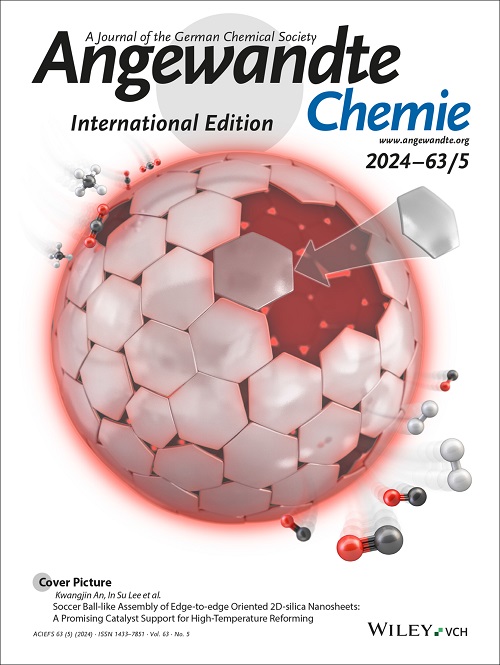Transforming Element Sulfur to High Performance Closed-Loop Recyclable Polymer via Proton Transfer Enabled Anionic Hybrid Copolymerization
IF 16.1
1区 化学
Q1 CHEMISTRY, MULTIDISCIPLINARY
引用次数: 0
Abstract
The utilization of sulfur has been a global issue. Copolymerization of element sulfur (S8) with other monomers is a promising route to convert it to useful materials but is limited by the comonomers. Here, we report anionic hybrid copolymerization of S8 with acrylate and epoxide at room temperature, where S8 does not copolymerize with epoxide in the absence of acrylate. Yet, the proton transfer from the methyne in acrylate to the oxygen anion enables the ring-opening of the cyclic comonomer and hence the copolymerization. The cyclic comonomers can be expanded to lactone and cyclic carbonate. Specifically, the copolymer of S8 with bisphenl A diglycidyl ether and diacrylate displays mechanical properties comparable to those of most common plastics, namely, it has ultimate tensile strength as high as 60.8 MPa and Young’s modulus up to 680 MPa. It also exhibits high UV resistance and good transparency. Particularly, it has excellent UV-induced self-healing, reprocessability and closed-loop recyclability due to the abundant dynamic S-S bonds and ester groups. This study provides an efficient strategy to turn element sulfur into closed-loop recyclable polymer with high mechanical and optical performances.通过质子转移阴离子混合共聚将元素硫转化为高性能闭环可回收聚合物
硫的利用一直是一个全球性问题。元素硫(S8)与其他单体的共聚是将其转化为有用材料的一条可行途径,但受到共聚单体的限制。在此,我们报告了 S8 与丙烯酸酯和环氧化物在室温下的阴离子杂化共聚,在没有丙烯酸酯的情况下,S8 不会与环氧化物共聚。然而,质子从丙烯酸酯中的甲基转移到氧阴离子,使环状单体开环,从而实现共聚。环状单体可扩展为内酯和环状碳酸酯。具体来说,S8 与双酚 A 二缩水甘油醚和二丙烯酸酯的共聚物具有与大多数普通塑料相当的机械性能,即极限拉伸强度高达 60.8 兆帕,杨氏模量高达 680 兆帕。它还具有很高的抗紫外线性能和良好的透明度。特别是,由于含有丰富的动态 S-S 键和酯基,它具有优异的紫外线诱导自愈性、可再加工性和闭环可回收性。这项研究为将硫元素转化为具有高机械和光学性能的闭环可回收聚合物提供了一种有效的策略。
本文章由计算机程序翻译,如有差异,请以英文原文为准。
求助全文
约1分钟内获得全文
求助全文
来源期刊
CiteScore
26.60
自引率
6.60%
发文量
3549
审稿时长
1.5 months
期刊介绍:
Angewandte Chemie, a journal of the German Chemical Society (GDCh), maintains a leading position among scholarly journals in general chemistry with an impressive Impact Factor of 16.6 (2022 Journal Citation Reports, Clarivate, 2023). Published weekly in a reader-friendly format, it features new articles almost every day. Established in 1887, Angewandte Chemie is a prominent chemistry journal, offering a dynamic blend of Review-type articles, Highlights, Communications, and Research Articles on a weekly basis, making it unique in the field.

 求助内容:
求助内容: 应助结果提醒方式:
应助结果提醒方式:


